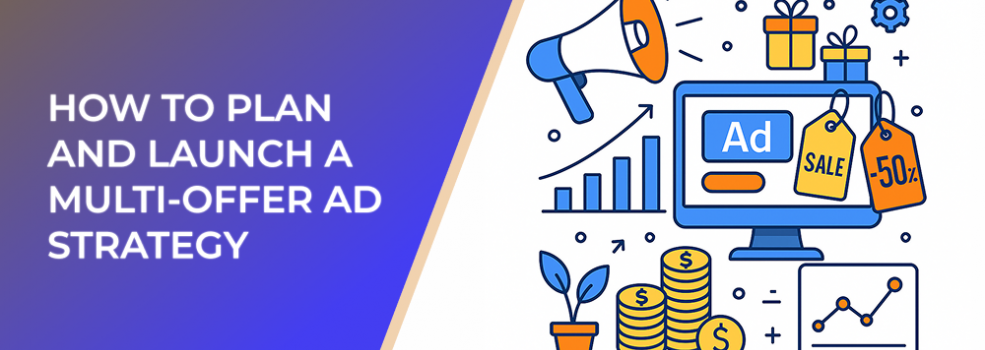Running a single ad campaign with one core offer is often too limiting in today’s competitive digital environment. Buyers have different needs, levels of awareness, and decision-making timelines. A multi-offer ad strategy allows you to engage each segment of your audience more effectively, increasing the chances of converting impressions into customers. Let’s explore how to plan and launch this type of strategy for maximum impact.
Why Multi-Offer Ads Work
Research shows that consumers interact with a brand an average of 6–8 times before making a purchase decision. Relying on just one ad type or offer means you risk losing attention after the first interaction. A multi-offer strategy solves this problem by presenting a variety of messages that appeal to different stages of the buyer’s journey.
-
Stat to note: According to HubSpot, 63% of marketers say generating traffic and leads is their top challenge. Multi-offer ads directly address this by creating multiple entry points for engagement.
Step 1: Define Your Offers
Before launching ads, map out the offers you want to promote. These should not all be direct sales pitches. A balanced mix may include:
-
Top of funnel offers: Free guides, webinars, or lead magnets.
-
Middle of funnel offers: Discounts, free trials, or case studies.
-
Bottom of funnel offers: Direct purchase incentives, limited-time offers, or product bundles.
Each offer must align with a stage of the buyer journey, ensuring that your ads remain relevant regardless of where the customer stands.
Step 2: Segment and Target Properly
Targeting is the backbone of multi-offer strategies. Without it, you risk showing the wrong message to the wrong audience.
-
Use Facebook’s audience segmentation to divide prospects by demographics, interests, and behaviors.
-
Leverage custom audiences for retargeting visitors who already engaged with one of your offers.
-
Create lookalike audiences to expand reach based on proven engagement data.
Step 3: Develop Creative Variations
Even the best offer won’t work if the creative execution doesn’t resonate. For a multi-offer strategy:
-
Design ad variations for each offer with tailored visuals and copy.
-
Use A/B testing to compare which formats deliver the best CTR and CPA.
-
Refresh creative regularly to avoid ad fatigue.
Stat to note: Facebook found that ad fatigue can start impacting performance within 5–7 days for high-frequency campaigns.
Step 4: Budget Allocation and Bidding
One mistake advertisers make is spreading their budget evenly across all offers. Instead, prioritize offers based on historical performance and funnel importance.
-
Allocate more budget to middle- and bottom-funnel offers where conversions are closer.
-
Use automated bidding to optimize for conversions rather than impressions.
-
Monitor CPA (Cost Per Acquisition) closely to ensure profitability.
Step 5: Measure, Optimize, Repeat
Success in a multi-offer campaign is tied to consistent measurement and optimization. Track KPIs across each funnel stage:
-
CTR (Click-Through Rate) for top-of-funnel awareness ads.
-
Lead-to-customer conversion rates for middle-of-funnel campaigns.
-
ROAS (Return on Ad Spend) for bottom-of-funnel ads.
Stat to note: A Databox survey revealed that marketers see an average ROAS of 4:1 when ads are consistently optimized.
Suggested Further Reading
If you found this article useful, you may also like:
Conclusion
A multi-offer ad strategy gives you flexibility, resilience, and a better chance to connect with prospects at every step of their journey. By carefully planning offers, segmenting audiences, testing creatives, and monitoring results, you can ensure that your campaigns drive consistent leads and revenue.

